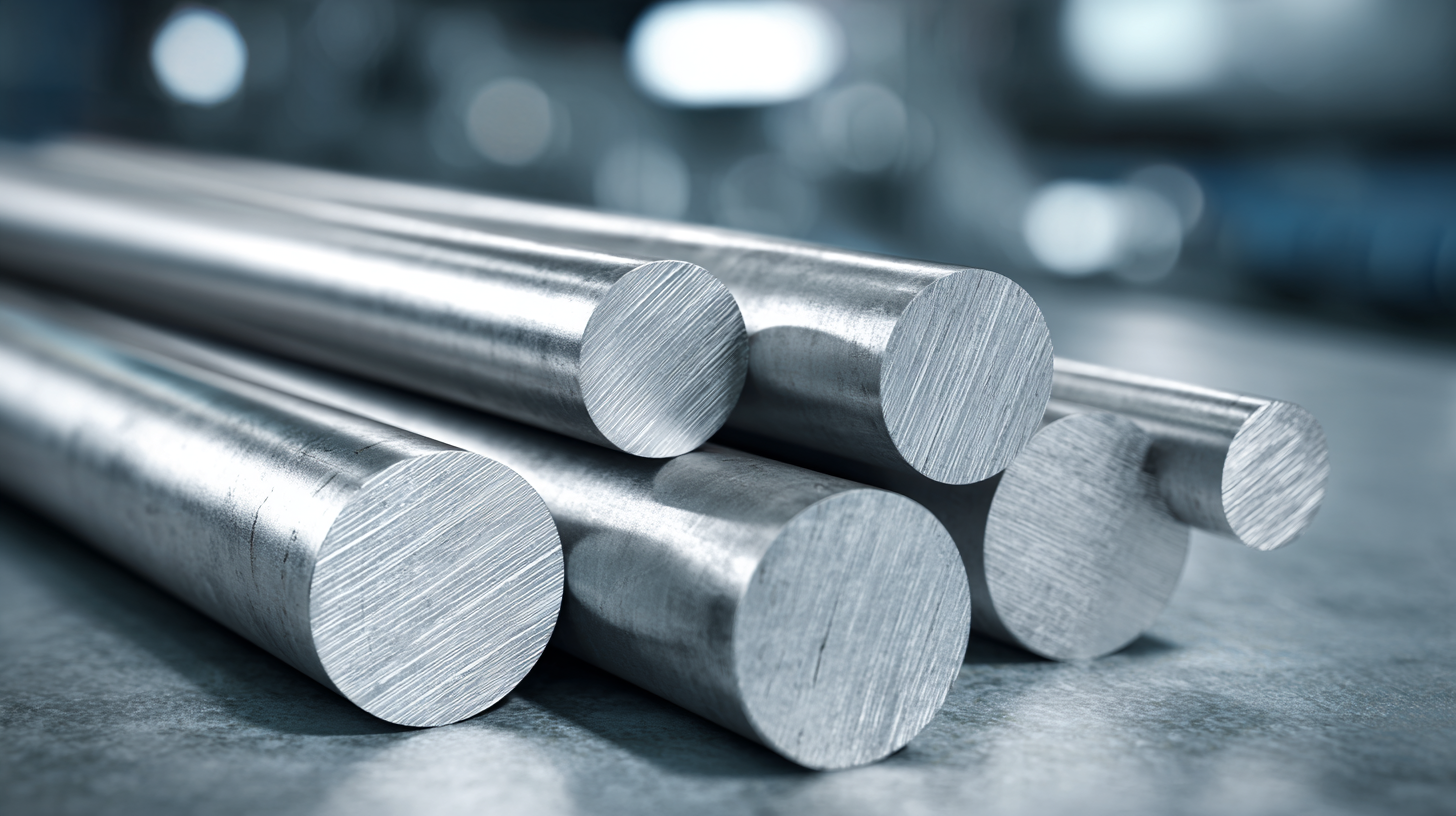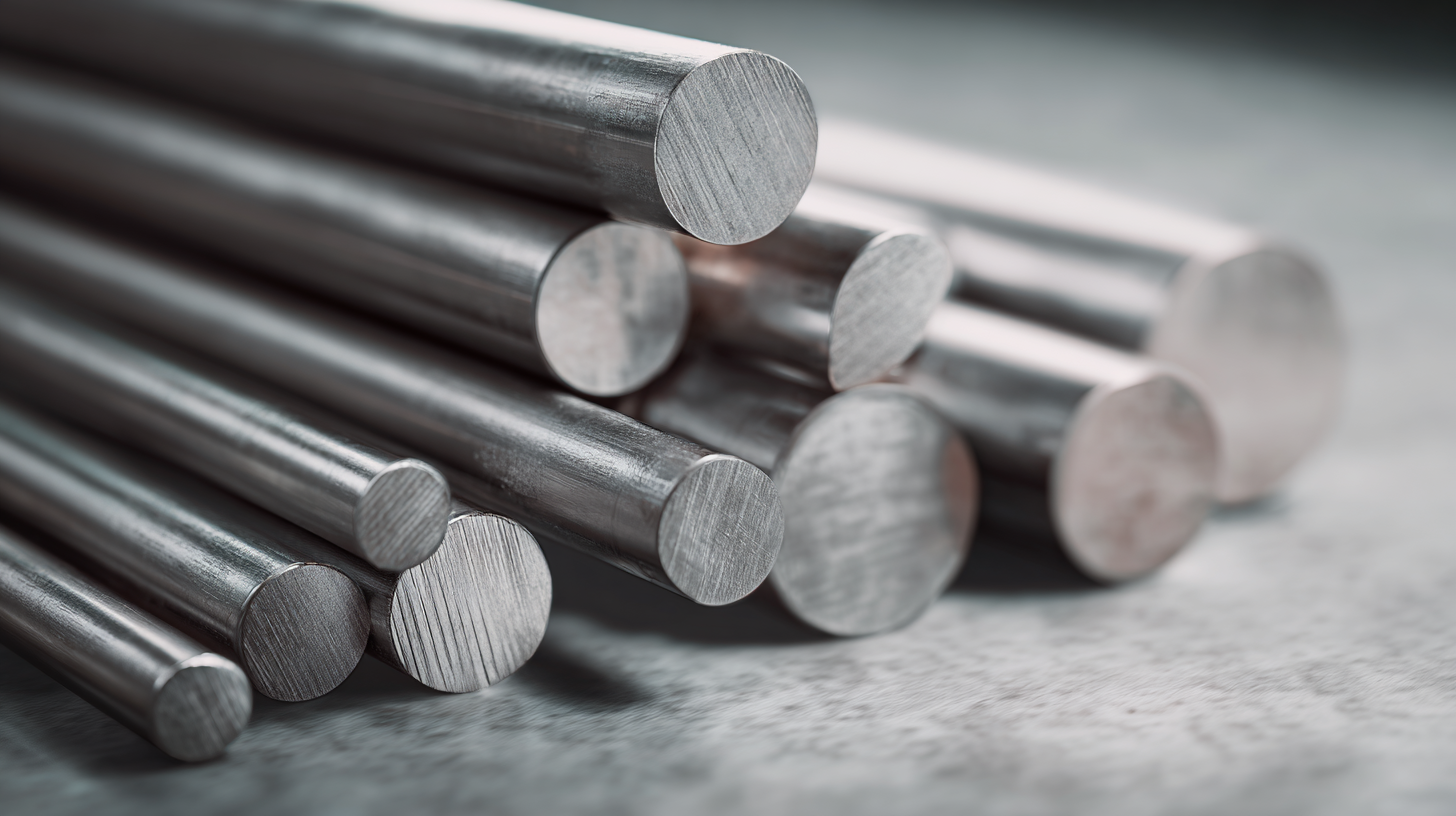Leave your message now to get your free sample and discount price
Leave your message now to get your free sample and discount price
In the realm of industrial applications, the selection of the right materials is crucial for optimizing performance and ensuring durability. Among the various materials available, Tungsten Metal Rods stand out due to their exceptional strength, high melting point, and remarkable resistance to wear and corrosion. According to industry reports, the global tungsten market is projected to reach approximately $2 billion by 2027, driven by the increasing demand for advanced materials in aerospace, automotive, and defense sectors. With tungsten's ability to withstand extreme conditions, the choice of the appropriate tungsten metal rod can significantly enhance operational efficiency. This blog will guide you through the essential factors to consider when selecting the best tungsten metal rod to meet your specific industrial needs, ensuring you make an informed decision backed by industry standards and practices.

Tungsten metal rods are essential components in various industrial applications due to their unique properties. Tungsten boasts an exceptionally high melting point, making it ideal for operations that involve extreme heat. The density and durability of tungsten rods enhance their ability to withstand wear and tear. Additionally, they possess excellent conductivity, which is crucial for electrical applications. Industries such as aerospace, electronics, and manufacturing increasingly rely on tungsten rods for their mechanical strength and reliability.

When selecting a tungsten metal rod, one must consider several key factors to ensure it meets specific industrial needs. Tip 1: Evaluate the required length and diameter of the rod to ensure it fits perfectly within your application. Tip 2: Assess the purity level of tungsten, as higher purity enhances performance in demanding environments. Tip 3: Don’t overlook the rod's surface finish; a smooth surface can reduce friction and increase efficiency, especially in rotating machinery.
In summary, understanding the properties and benefits of tungsten rods is crucial. Their resilience, heat resistance, and electrical conductivity make them indispensable in various industries. By paying attention to important selection criteria and applying these tips, you can ensure the best outcomes for your industrial applications.
When selecting the best tungsten metal rod for your industrial needs, several critical factors must be considered to ensure optimal performance for your specific application. The first factor is the tungsten rod's purity level; high-purity tungsten (typically above 99.9%) is essential for applications requiring exceptional conductivity and thermal resistance. According to a report by the International Tungsten Industry Association (ITIA), the performance of tungsten components in high-temperature applications can be significantly enhanced when using high-purity material, which improves durability and reduces wear rates.
Another important consideration is the rod's dimensions and tolerance levels. The diameter and length of the tungsten rod should align with application specifications to avoid issues during fabrication or operation. The American Society for Testing and Materials (ASTM) outlines standardized specifications, indicating that rods with tighter tolerances often yield better fitting and enhanced functionality within precision machinery. Moreover, examining the rod’s mechanical properties, such as tensile strength and ductility, is crucial, as these characteristics can impact the performance of the rod under various operational conditions. By carefully evaluating these factors, you can select the right tungsten metal rod that fulfills the demands of your industrial application effectively.
When selecting tungsten metal rods for industrial applications, understanding the source of the material is crucial. Chinese tungsten has gained prominence in the global market, accounting for approximately 60% of the world's tungsten production, according to a report by the United States Geological Survey (USGS). This significant share is not merely due to quantity; it reflects China’s advanced manufacturing technologies and cost-effective production processes that enable lower prices without compromising quality.

Moreover, Chinese manufacturers are continually investing in innovative production techniques that enhance the purity and performance of tungsten products. A recent study by Grand View Research highlighted that the demand for high-purity tungsten products is expected to grow annually by 5.8% until 2027. This demand is driven by various sectors, including aerospace, electronics, and medical equipment. The combination of high-grade materials and competitive pricing positions Chinese tungsten as a preferred choice for businesses looking to optimize their supply chains and ensure reliable sources for tungsten metal rods.
Tungsten metal rods are indispensable across various industrial sectors, thanks to their unique properties such as high density, exceptional hardness, and superior resistance to heat and wear. These rods are widely utilized in manufacturing aerospace components, military applications, and specialized industrial tools. Their ability to withstand extreme environments makes them particularly valuable in sectors requiring durability and reliability.
When selecting the best tungsten metal rod for your industrial needs, it’s essential to consider the specific application. For instance, if you require rods for aerospace engineering, opt for those with precise tolerances and a focus on lightweight design. In contrast, rods used in military applications may need to meet stringent certifications for resilience to impact and high temperatures.
Tip: Before purchasing, ensure you examine the rod's specifications, including its grade and dimensions, to determine its compatibility with your project requirements. Additionally, sourcing from established suppliers can help assure quality and consistency in the materials you're choosing.
| Application Sector | Typical Use | Required Length (mm) | Diameter (mm) | Tensile Strength (MPa) |
|---|---|---|---|---|
| Aerospace | Structural components | 1000 | 10 | 1400 |
| Medical | Radiation therapy | 500 | 5 | 1200 |
| Defense | Projectiles | 700 | 12 | 1600 |
| Manufacturing | Cutting tools | 900 | 8 | 1500 |
| Electronics | Electrode materials | 600 | 6 | 1100 |
When sourcing high-quality tungsten rods for industrial applications, it is crucial to focus on key characteristics that ensure optimal performance. Tungsten is renowned for its exceptional density and melting point, which exceed 6,000°F (3,400°C). This allows it to withstand extreme conditions often present in manufacturing processes, making it a preferred material in industries such as aerospace and defense. According to the International Tungsten Industry Association (ITIA), the global demand for tungsten rods is expected to rise by approximately 5% annually as industries seek materials that can enhance the efficiency and durability of their operations.
One essential tip for selecting tungsten rods is to ensure they conform to industry standards such as ASTM B760, which specifies the standards for tungsten rod quality. Notably, sourcing from reputable suppliers who can provide certifications and material test reports is crucial. For instance, a recent industry report indicated that Tungsten rods sourced from ISO-certified manufacturers exhibit significantly lower defect rates and superior performance consistency compared to those from non-certified suppliers. Paying attention to the grain size and purity levels—ideally above 99.95% for high-performance applications—can also greatly impact the longevity and reliability of the product in demanding environments.
